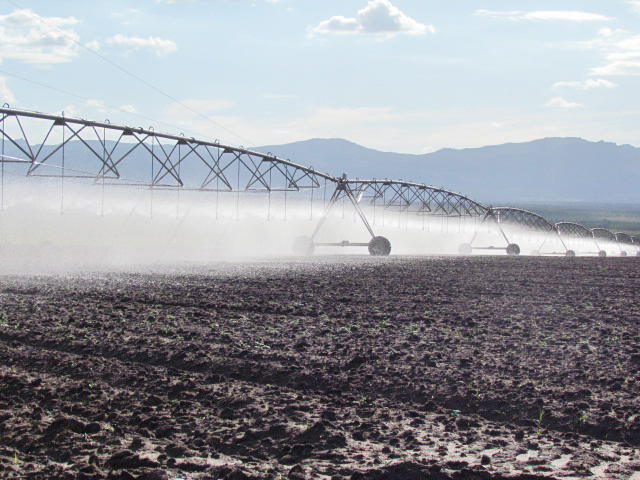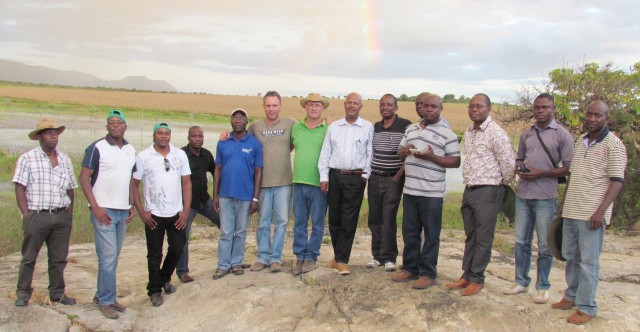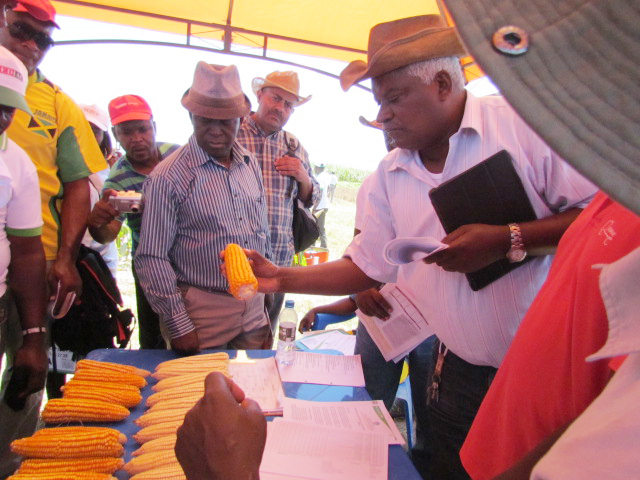
Angola: Shifting from landraces to improved maize varieties
CIMMYT, in partnership with the Instituto de Investigação Agronómica (IIA), the Angolan national agricultural research institute, is helping the country shift from using maize landraces to locally adapted materials.
 Angola is rebuilding its infrastructure after a prolonged civil war that slowed down agricultural production. During the war, farmers could not access improved maize seed and relied on landraces. “After the war, they started shifting from the landraces to open-pollinated varieties (OPVs),” explained Peter Setimela, CIMMYT seed systems specialist. “Five years ago, there were no improved maize seeds in Angola. Now, we have some good OPVs and hybrids.”
Angola is rebuilding its infrastructure after a prolonged civil war that slowed down agricultural production. During the war, farmers could not access improved maize seed and relied on landraces. “After the war, they started shifting from the landraces to open-pollinated varieties (OPVs),” explained Peter Setimela, CIMMYT seed systems specialist. “Five years ago, there were no improved maize seeds in Angola. Now, we have some good OPVs and hybrids.”
The country has been importing improved maize varieties from Brazil and France, though not without problems. “They discovered that some of these varieties were hampered by diseases such as gray leaf spot, maize streak virus and northern leaf blight,” said CIMMYT breeder Cosmos Magorokosho.
Working in partnership with IIA breeders, CIMMYT scientists have been testing materials that are locally adapted, some of which are now being produced by local seed companies. Last month, a multidisciplinary team from CIMMYT and IIA, led by the Drought Tolerant Maize for Africa (DTMA) Project Leader Tsedeke Abate, went on a field tour in Angola.
The team visited seed production farms in Kwanza Sul, demonstrations and on-farm and on-station trials at the IIA Chianga experimental station in Huambo to evaluate drought-tolerant maize varieties being grown and tested in the country. The team, including CIMMYT and IIA breeding, communications, seed systems and socioeconomics staff, visited a community seed production farm managed by Cooperativa Faca Tudo Pelo Tempo (“do everything on time” in Portuguese). The farmer’s cooperative produces rain-fed basic seed for the OPV maize varieties ZM309, ZM521 and ZM523, with technical support from IIA breeder Dibanzilua Nginamau. The cooperative is an umbrella body for 30 farmer groups with 1,250 members, including 600 women, according to Nginamau.

The team visited smallholder farmer Dominga Ngueve, who planted varieties for demonstration on her farm near the Chianga station. “I prefer ZM309 because it matures early and I am able to get [maize for] food earlier,” Ngueve said. “When improved seed is unavailable, I buy local varieties from other farmers.” The smallholder farmer practices the crop rotation of planting maize during the long season and beans during the low season. She also grows cassava and potatoes. “Our food crop is maize; if you sell it, you create hunger,” said Ngueve, explaining the importance of maize in her community.
CIMMYT is helping Angola improve this important crop. “Angola has great potential for advancing agriculture,” Abate said, citing the country’s arable land and water resources. CIMMYT is using its germplasm resources to help public and private sector partners, such as SEDIAC, Matogrosso and Kambondo farms, that have recently ventured into seed production in Angola. CIMMYT is also contributing to capacity building by training breeders and technicians from the national program and seed companies.
 Angola is producing ZM523 on 560 hectares at Kambondo and Matogrosso farms with technical support from DTMA. An expected 2,400 tons of certified seed will be available for use by local farmers in the coming season. These two companies are well-positioned to produce certified seed through irrigation, as they each have six units of pivot irrigation that enable them to continue production even when the rains are erratic.
Angola is producing ZM523 on 560 hectares at Kambondo and Matogrosso farms with technical support from DTMA. An expected 2,400 tons of certified seed will be available for use by local farmers in the coming season. These two companies are well-positioned to produce certified seed through irrigation, as they each have six units of pivot irrigation that enable them to continue production even when the rains are erratic.
Kambondo farm has already produced nine tons of CZH03030 and has planted 50 hectares of the same variety for grain production. Abate commended SEDIAC for hosting the field day. “It is an opportunity for researchers from the national agriculture research system to network with all the agricultural stakeholders in Angola,” he said. The field day was also attended by three traditional leaders from the local community.
Through the collaborative work of IIA, CIMMYT, seed companies and cooperatives to strengthen seed systems in Angola, “farmers can increase their food security and livelihoods by taking up droughttolerant varieties,” said CIMMYT socioeconomist Rodney Lunduka.
Africa, Angola, field day, improved seed, private sector, seed companies
